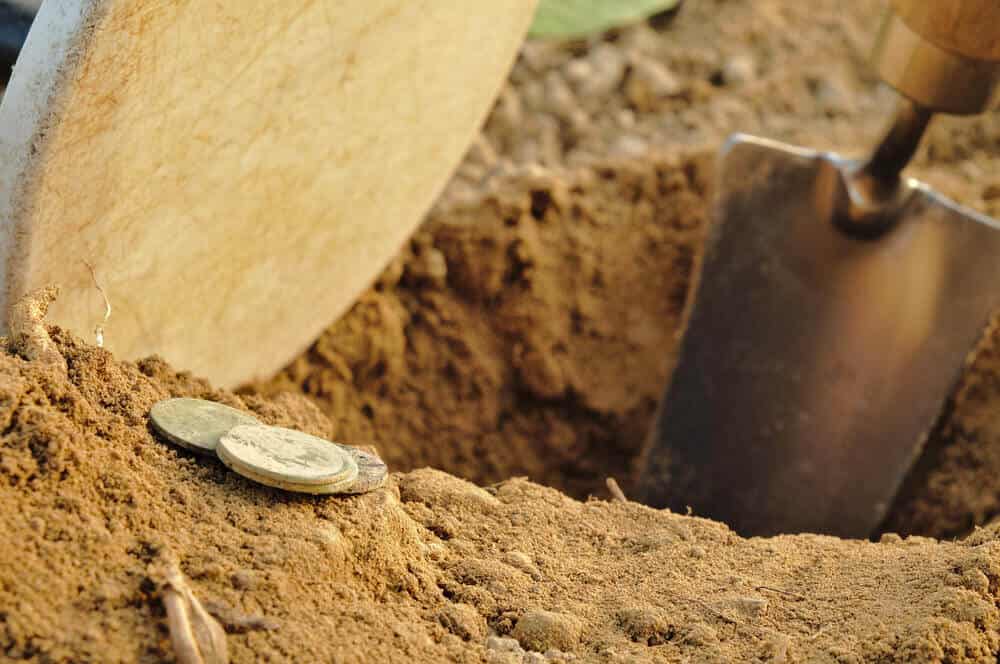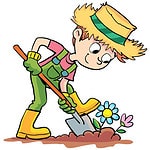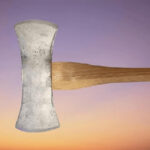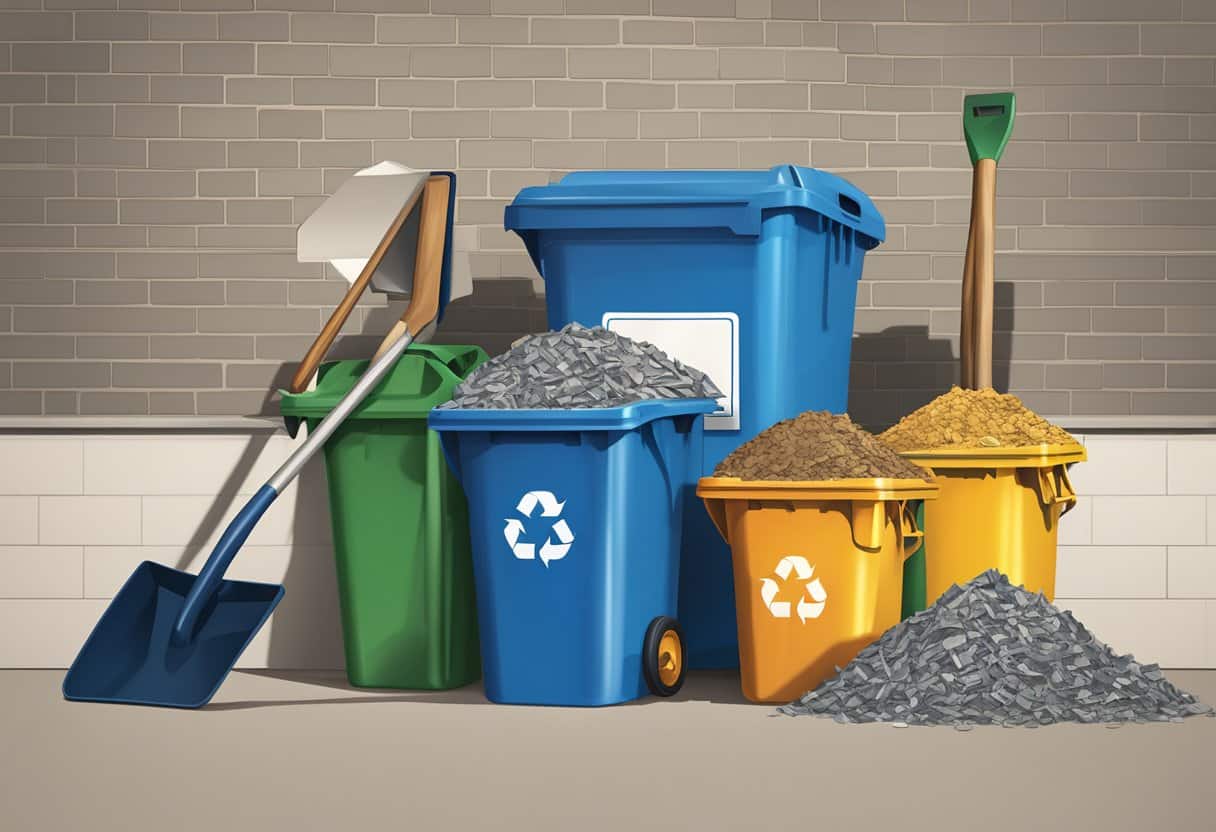A sifter shovel will help to help you quickly sift through sand and dirt, making it the ideal tool for a metal detecting adventure, landscaper, gardener, crafter or animal lover. These shovels will make quick work of separating unwanted material from your soil, leaving you with pure, nutrient-rich earth.
Table of Contents
What is a Sifter Shovel?
You may have heard of a sifter shovel if you enjoy gardening or landscaping. This type of shovel has holes in the head of the shovel, and you can attach mesh screens of various sizes, allowing you to sift through the soil, gravel, and other materials to remove rocks, sticks, and other debris.
A sifter shovel is a valuable tool for creating a level surface for a patio, walkway, landscaping projects, animal clean up, gardening and metal detecting, as it can significantly reduce the time and effort required to sift through the soil using your hands.
Benefits of Using a Sifter Shovel
Using a sifter shovel has many benefits. For example, it can make cleaning up after your pets or metal detecting much easier and more efficient. The sifter shovel lets you quickly sift through the litter or grass to remove solid waste, which saves you time and makes the job less unpleasant.
A sifter shovel is also an excellent tool if you enjoy metal detecting. The sifter lets you quickly sift through dirt and sand to find small metal objects.
Aside from its primary purpose of sifting soil or sand, some people use it to separate rocks or debris from gravel or mulch in their gardens. It can also be used to sift through compost to remove unwanted materials. Some crafters even use sifter shovels to sift through materials such as glitter or beads.
Our guide Best Metal Detecting Shovels and Scoops is a great resource to help you choose the best digging shovel for metal detecting whether on the beach, riverbed, or plain.
Features to Consider In A Sifter Shovel
Long Handle
A long handle can make reaching deeper areas easier without bending over or kneeling, which is especially helpful if you’re sifting through a large area or have back problems. Look for a sifter shovel with a handle at least 30 inches long.
Weight
Another important feature to consider is the overall weight and durability of the sifter shovel. A heavy duty sifter shovel will withstand regular use and won’t break or bend easily, but it is heavier. On the other hand, an aluminum alloy sifter will be lightweight and durable, making it easy to use and long-lasting. It’s also essential to look for a sifter that is fine enough to sift out small particles but not so fine that it clogs easily. Alternatively, you can purchase a sifter shovel with larger holes and attach a finer mesh to the shovel to decrease the hole size.
Material
Sifter shovels are made from various materials, including metal, plastic, and wood. Each shovel material has pros and cons, depending on the intended use of the shovel.
- Metal: Metal sifter shovels are durable and long lasting, making them ideal for heavy duty use.
- Plastic sifter shovels are lightweight and easy to handle, making them suitable for light-duty use, such as animal debris pickup or surface sand down to about one inch. However, plastic shovels will be less durable if used with dirt.
- Wood: Wood sifter shovels are lightweight and easy to handle, making them ideal for light-duty use. However, wood will wear quicker than metal or plastic shovels.
Deep Shovel
The depth of the shovel is also important to consider. A deep shovel will be able to hold more material and make it easier to sift through larger areas. The best is to look for a sifter shovel at least 4 inches deep.
Types of Sifter Shovels
Sifter shovels come in various types, each designed for a specific purpose. Some of the most common types include:
- Slotted sifter shovels: These shovels have a slotted design that makes them ideal for separating small particles from larger ones. They are often used in gardening and landscaping to remove rocks and debris from the soil. The slot design reduces rocks from falling through compared to a round slotted sifter shovel.
- Mesh sifter shovels: These shovels have a mesh design ideal for sifting sand and other small particles and are often used in construction to separate gravel from the sand.
Different Sizes Of Mesh Screens
Mesh screens come in various sizes that can be attached to a sifter shovel. The mesh screen size refers to the number of openings per linear inch. For example, a 20-mesh screen will have 20 openings per linear inch. The larger the number, the smaller the openings in the mesh. Mesh screens can range from coarse to fine, depending on the intended use.
Choosing the appropriate mesh size for your intended use is important. Using a mesh that is too fine or coarse will leave you frustrated as you will have poor sifting performance. Here is a breakdown of mesh sizes to give you an idea of some standard mesh sizes for sifter shovels.
- 20 mesh: Coarse mesh ideal for sifting large particles such as gravel or rocks.
- 40 mesh: Medium mesh that is suitable for sifting sand or soil.
- 60 mesh: Fine mesh ideal for sifting finer particles such as flour or powdered sugar.
- 100 mesh: Extra-fine mesh suitable for filtering very fine particles such as icing sugar or cocoa powder.
How To Use A Sifter Shovel
Using a sifter shovel is relatively straightforward.
- Hold the handle of the sifter shovel and position it over the material you want to sift.
- Use a scooping motion to collect the material onto the sifter plate.
- Hold the sifter plate over a container or surface that can catch the sifted material.
- Shake the shovel gently back and forth to allow the smaller particles to fall through the holes or mesh.
- Discard any larger particles that remain on the shovel.
- Repeat the process until you’ve sifted all the material you need.
Maintenance and Care
Proper maintenance and care of your sifter shovel can help extend its lifespan, so remember to:
- Clean your sifter shovel after each use to prevent the buildup of debris.
- Store your sifter shovel in a dry, cool place to avoid rust or other damage.
- Check your sifter shovel regularly for signs of wear and tear on the handle and the shovel head, and replace it if necessary.
Final Thoughts
Sifter shovels are a versatile and essential tool for anyone who needs to sift and separate small particles from larger ones quickly and efficiently. By understanding the different types and materials available, how to use them, and their benefits, you can choose the right sifter shovel for your needs and get the most out of this handy tool.














